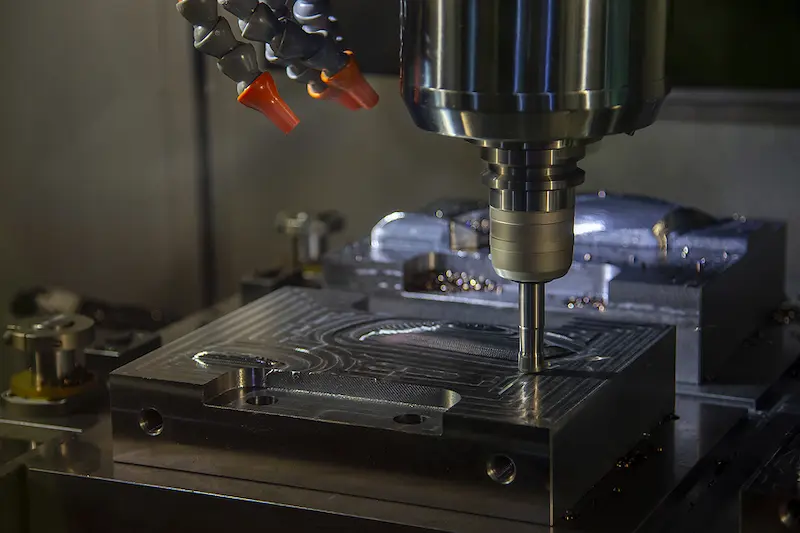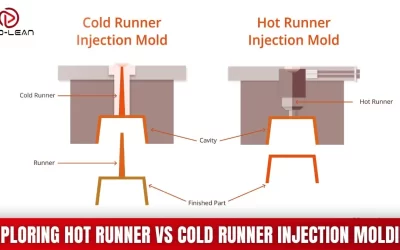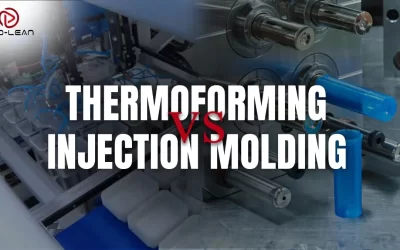
We all remember playing with Lego toys in our childhood, but do you know how they are made in factories? Traditionally, woodworking was the major method. However, manufacturing advances have made injection molding Lego widely popular over time. The low-cost mass production, repeatability, complex features, and other beneficial properties of injection molding are key reasons behind this.
The mold for Lego toys, bricks, and other items is also a critical aspect of the process. Several mold materials, cavity intricacies, fittings, and production-volume ability need to be considered for mold making.
Continue reading, we will discuss the process, benefits, and examples of Lego molding till the end.
What Are the LEGOs?
A LEGO refers to a toy or several interlocking items that can be fitted into a single toy. The term “LEGO” refers to the company name of LEGO Group. After the wide popularity of toys produced by the company in the 1950s, all of the items became popular in the market with this name.

Molding LEGO bricss
Besides standard LEGO Group products, injection molding companies also use the term “LEGO” for the toys and parts that work by fitting individual pieces.
Furthermore, muti-cavity injection molding is suitable for LEGO manufacturing. Muti-cavity molds ensure that each piece is produced with consistent dimensions, smooth finishes, and strong interlocking capabilities.
Try Prolean Now!
The Process of Lego Injection Molding
Besides some standard Lego products, you can produce different custom Lego-like toys, blocks, bricks, art, and decorative products. Additionally, numerous Lego toys can be made that do not fall under the trademark of Lego Group.

Injection mold for LEGO-like products
Like every other plastic injection molding process, Lego molding involves mold creation, material selection, the injection process, curing, and ejection. Let’s discuss each of these briefly.
- Mold Design
The Lego company itself sells designed and ready molds for legos, which are up to their standards and specifications. However, you need to design and manufacture separately for custom parts & products. CAD, Solidworks, and other design software are used to create the mold’s virtual model.
- Mold Manufacturing
Based on the complexity and size of the mold, CNC machining, EDM, laser cutting, and other processes are used for the manufacturing. CNC machines can automate the manufacturing of LEGO molds using CAM-generated G and M code instructions.
Additionally, considering the tight tolerances and fittings of mold components is also essential for fine and accurate LEGOs.
- Material Selection
Common material for Lego toys and blocks is Acrylonitrile Butadiene Styrene (ABS). ABS offers high mechanical strength, impact strength, corrosion & wear resistance, and durability. In material selection, look for your requirements and corresponding ABS color and commercial grade.
- Machine Setup
Set the mold on the injection molding machine and set the parameters, such as injection pressure, speed, temperature, and alignment with the clamping unit.
- Injecting the Material
Next load the pallet into the hopper, then the screw will push and melt the raw material before leaving the nozzle. Then, the nozzle injects the molten material through the runner. As material liquid flows inside the cavity, it captures the intricate details.
Furthermore, another approach for molding is heating the ABS granular first ( up to 450° C) and injecting the molten form under high pressure, typically 150 tons.
- Curing and Ejection
Next, cure the mold for a specific time with the required temperature control. Often, the filled molds are rolled over a conveyor belt during the cooling for high-quality results. Once it is fully solidified, remove the LEGO from the mold using the ejector pin or whatever mechanism the mold has.
- Post Processing

Finished LEGO toys
Remove the flashes or attached material from molded LEO. Additionally, you can apply sandblasting, polishing, painting, and other finishing approaches for custom surfaces.
Benefits of Using Plastic Injection Molding For Lego Toys
Using the plastic injection molding method for manufacturing LEGO Toys items has many advantages: Precision, Strength, Appearance, and Cost benefits.
Versatile Color Options
ABS pallets and granules come in numerous color options, including red, pale yellow, blue, pink, gray, and brown. Consequently, each of the standard colors has different sub-color options. For instance, ABS has more than 15 options only under the brown colors category. There are also the color painting options that you can choose after the molding.
Tight Tolerances
Either a single toy molding or individual molding of different components for assembly, precision injection molding can achieve tolerances down to ±0.01mm. This precision also facilitates strong fitting during the assembly.
High-Cost Effectiveness
The steel molds or other tough tooling can produce LEGO up to a million cycles. So, it significantly reduces the injection molding cost for high-volumes.
For small volumes, the Lego silicone mold is a suitable option. It reduces the cost of mold making by 80-90% compared to durable metal tooling. The silicone molds do not require machining or other complex manufacturing techniques. A pattern is made and silicon surrounds that making the cavity after ejecting it. Consequently, silicone mold can last for up to 50 production cycles.
Smooth Finishing
The molding LEGOs provide smoother surface finishes due to the high compression of the injection process. The key is the finishing of mold-cavity walls. You can use EDM or other micro-machining processes for the finish of cavity walls, which further results in a smooth surface for LEGOs.
What Can be Made with LEGO or LEGO-like Injection Molding?
LEGO or LEGO-like injection molding produces s toys, arts, interlock decorative models, games, and other similar applications. The list below shows the examples of LEGO injection molding products;
- Rapid prototyping of custom LEGO-like toys
- LEGO bricks and figures
- LEGO keychains and related accessories
- Mass production of standard toys or bricks
- Duplo bricks and parts for toddlers
- Educational learning materials and kits for kids
- Transparent windows and windscreens ( small sizes)
- Limited Editions of comics and other figures
Effective Five Tips for LEGO Injection Molding
The following are some tips you can follow during LEGO Molding Process;
- Maintain Tight and Uniform Tolerances
Especially for the Lego bricks to be assembled or individual components of a toy, maintaining a uniform tolerance is essential. It helps for better fitting and compatibility during the assembly process.
- Use Mirror EDM and Wire Cut

CNC machining of LEGO mold
The machining quality of the mold cavity directly impacts the precision and injection molding finishes of LEGO parts. Additionally, Wire EDM can cut and drill highly intricate features. So, use these machining techniques in your mold-making step.
You can also opt for the polishing of drilled holes, channels, can sharp corners.
- Quality Control Inspections
Use tools like a CMM machine, calipers, gauges, and micrometers to ensure the dimensional and geometrical correctness of LEGO molding items.
- Consider Injection Molding Defects
Consider the possible injection molding defects like sink marks, jetting, weld lines, and burn marks. Then, optimize the design to avoid them in the primary phase. You can also perform some test runs and optimize the mold & parameters before moving into actual production.
- Cooling Time for LEGOs
Cooling time is quite short for the LEGO injection molding, typically 10 seconds for standard sizes. However, it increases as the LEGO becomes larger and heavier.
Read more: Different Injection Mold Types
Try Prolean Now!
Summing Up
The LEGO Injection Molding provides high customizations and cost-effectiveness for various LEGO toys, bricks, and custom LEGO-like items. Both metal (durable) tooling and silicone molds can be used to produce LEGOs with vibrant colors and reflective finishes.
At ProleanTech, injection molding service includes everything required to make LEGO toys and other items, mold manufacturing, LEGO molding, and post-processing. Our engineers first work with clients to understand their requirements and the factory team processes the manufacturing to achieve all specified requirements.
FAQs
Can I use injection molding for LEGOs?
Yes, you can use precision injection molding for LEGO bricks production with high precision, repeatability, and efficiency. They are durable and highly cost-effective for large volumes.
How much does a LEGO injection mold cost?
A LEGO injection mold can cost anywhere from $20,000 to over $150,000. The exact price depends on the complexity, precision requirements, and mold life.
What is the cooling period for injection molding LEGOs?
The typical cooling period for injection molding LEGO items ranges from 5 to 10 seconds.
Which material is used for LEGO injection molding?
Acrylonitrile Butadiene Styrene (ABS) is the most common LEGO material that provides longevity, strength, and best price value.




0 Comments